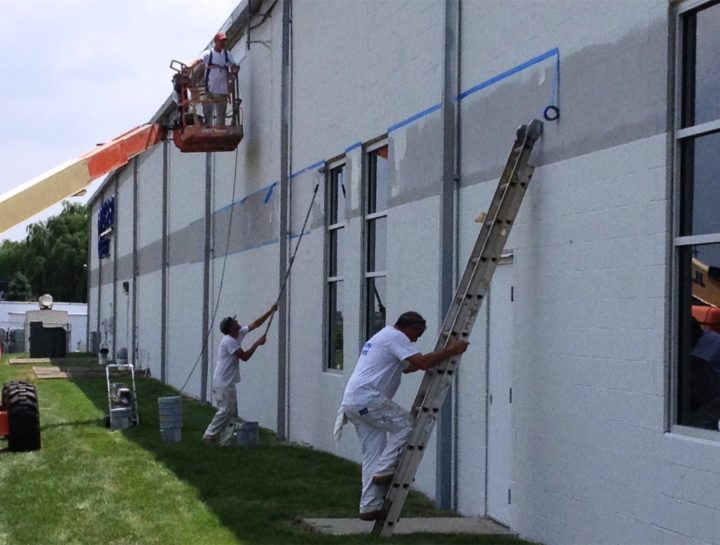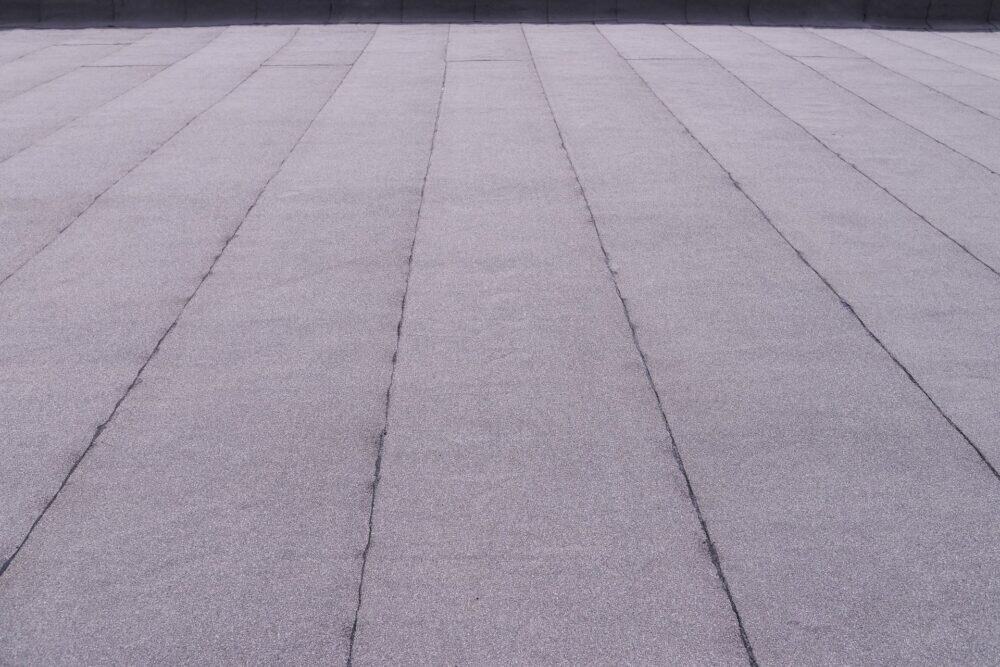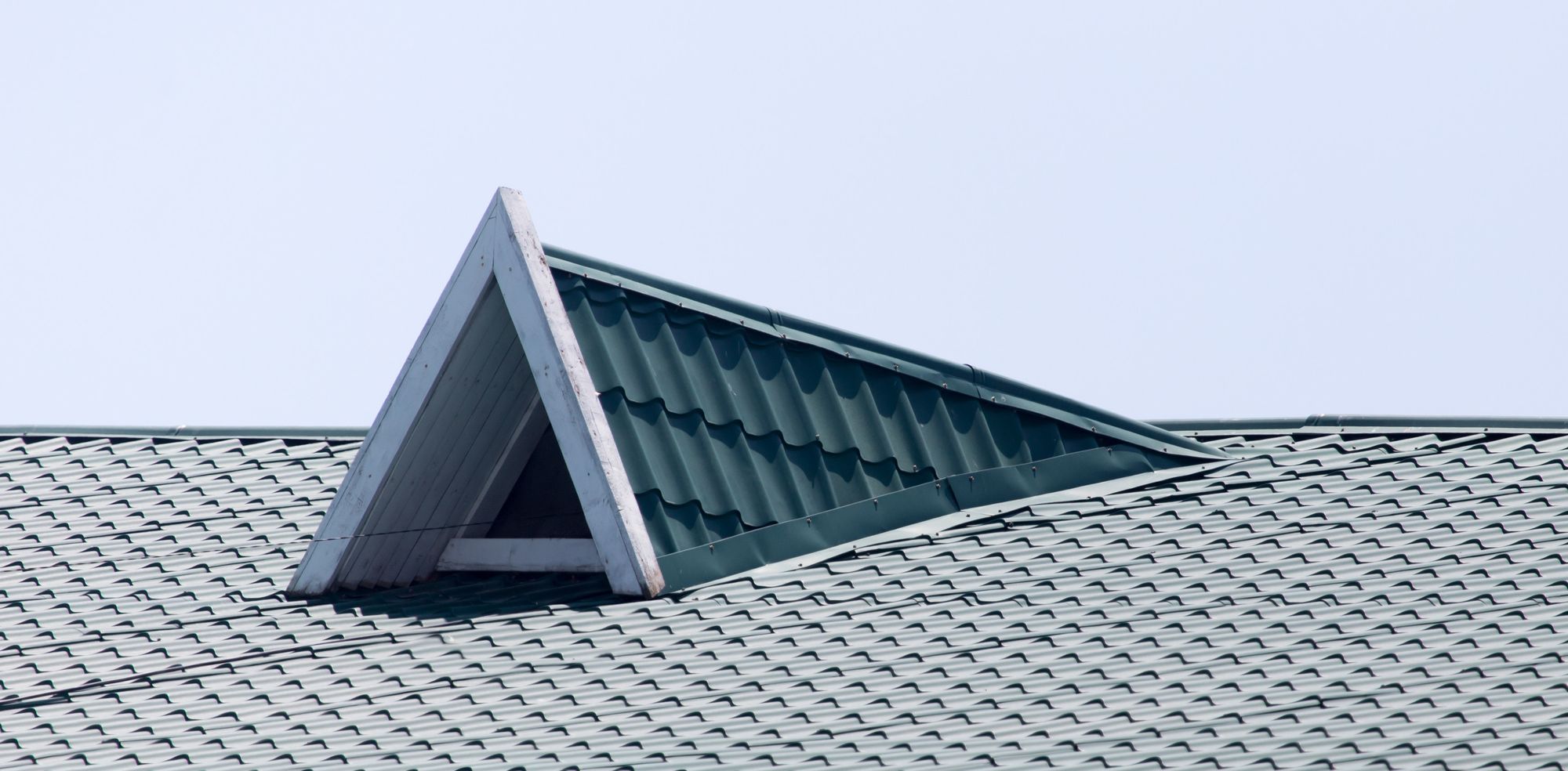What Is TPO Roofing?
TPO (Thermoplastic Polyolefin) is a single-ply roofing membrane used on flat and low-slope buildings. It’s supplied in wide white (and sometimes gray/tan) sheets and is hot-air welded at the seams to create a continuous, watertight surface. TPO is popular for its reflectivity, relatively light weight, and straightforward detailing around penetrations and edges.
Why Many Owners Choose TPO
- High reflectivity: White TPO reflects sunlight, which can help reduce rooftop temperatures and support energy-efficiency goals.
- Welded seams: Hot-air welding produces strong, uniform seams and clean detailing at corners, curbs, and terminations.
- Lightweight: Useful where structural load is a consideration.
- Versatile detailing: Pre-formed accessories and consistent welding make flashings efficient and repeatable.
- Compatible with many roof assemblies: Works with a range of insulations and cover boards.
Installation Methods We Offer
We tailor the attachment method to the building, deck type, and local conditions after a roof assessment.
- Mechanically Attached
Sheets are fastened in the field and seams are hot-air welded.
Good for: Large open roofs, speed, and controlled material use. - Fully Adhered
Membrane is bonded to the substrate with adhesive; seams are welded.
Good for: Improved wind performance on complex roofs and a smooth finished look. - Ballasted (select cases)
Loose-laid membrane held in place with approved ballast; seams still welded at overlaps.
Good for: Strong structures that can accommodate added weight and minimal adhesive use.
Overlay options may be possible after moisture scans and structural checks. Where overlays aren’t suitable, we plan an orderly tear-off.
Our Assessment & Build Process
- Condition Review – We document deck type, wet insulation (if any), drainage, and local code/wind exposure.
- Scope & Options – We share attachment method, membrane thickness, insulation approach, edge details, and phasing.
- Substrate Preparation – Replace wet materials, improve slope to drains/scuppers, and install cover boards where beneficial.
- Membrane & Flashings – Lay sheets to minimize seam length; hot-air weld seams and detail penetrations and perimeters.
- Quality Checks – Probe seams, verify weld integrity, confirm terminations, and photo-document key details.
Membrane Thickness, Insulation & Cover Boards
- Membrane thickness: Common options include 45-mil and 60-mil, with thicker options used where added durability is desired.
- Insulation: Polyiso is frequently used to meet target R-values; we can combine with EPS or XPS based on performance and budget.
- Cover boards: HD polyiso or gypsum cover boards help with puncture resistance, hail performance, and consistent adhesion.
Maintenance & Care
A simple, consistent routine helps keep TPO performing well:
- Scheduled inspections (seasonal and after major weather)
- Keep drains, gutters, and scuppers clear of debris
- Check laps, welds, flashings, and terminations
- Address minor issues early—localized heat-weld touch-ups and accessory replacements are typical tasks
We can set up a maintenance plan that matches the building’s access and traffic patterns.
TPO vs. EPDM vs. PVC (At a Glance)
| Consideration | TPO | EPDM | PVC |
|---|---|---|---|
| Base Material | Thermoplastic polyolefin | Synthetic rubber | Polyvinyl chloride |
| Typical Color | Mostly white (also gray/tan) | Black or white | Mostly white |
| Seams | Hot-air welded | Tape/adhesive | Hot-air welded |
| Reflectivity | High (white) | Varies by color/coating | High (white) |
| Chemical/Oil Exposure | Good general resistance | Good general resistance | Often selected near oils/grease sources |
| Notable Strength | Cool-roof performance, welded seams | Flexibility, easy patching | Chemical/oil resistance, welded seams |
We help select the system based on climate, rooftop equipment, foot traffic, exposure, and budget.
Budget Drivers (What Typically Affects Cost)
- Overlay vs. tear-off and any wet insulation replacement
- Attachment method (mechanically attached vs. fully adhered vs. ballasted)
- Membrane thickness and sheet layout
- Insulation type/R-value and use of cover boards
- Perimeter and edge details, building height, and wind exposure
- Number of penetrations, curbs, skylights, and roof zones
- Site access, safety requirements, and staging logistics
We provide clear, line-item scopes so trade-offs are easy to understand.
FAQs
Q: Why do many TPO roofs look “cool roof” white?
A: The white surface reflects sunlight, which can help reduce rooftop temperatures. Some projects use gray or tan for design or reflectance balance.
Q: Can TPO go over our existing roof?
A: Sometimes. We evaluate moisture, attachment, and structure first. If conditions are right, an overlay may be considered to reduce disruption.
Q: How are seams joined?
A: With hot-air welding, which creates uniform, consistent laps when installed correctly and checked during quality control.
Q: Is TPO compatible with solar arrays?
A: Yes. We coordinate slip-sheets, layout, ballast or attachments, and protection details with the solar provider.
How We Work at Aaron Blake Commercial Roofing
- Assessment-led design: We align membrane, attachment, and insulation to the building and climate.
- Clean execution: Consistent welding, tidy detailing, and thorough site safety and housekeeping.
- Clear documentation: Photos, details, and a post-project care plan so facilities teams know what to monitor.
Next Steps
If TPO sounds like a fit, we can perform a roof review, document current conditions, and provide a TPO proposal alongside any strong alternatives. You’ll get a clear scope, schedule, and maintenance plan tailored to your building.
Contact Aaron Blake Commercial Roofing
Let’s assess your roof and build a plan that fits your facility, timeline, and budget.





